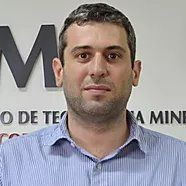Simulation Using the Discrete Element Method (DEM) in the Minerals Industry
A special issue of Minerals (ISSN 2075-163X). This special issue belongs to the section "Mineral Processing and Extractive Metallurgy".
Deadline for manuscript submissions: closed (18 June 2021) | Viewed by 45509
Special Issue Editor
Interests: comminution; discrete element method; modeling and simulation; classification; numerical methods; materials handling; mineral processing
Special Issues, Collections and Topics in MDPI journals
Special Issue Information
Dear Colleagues,
The discrete element method (DEM) has proved to be a powerful tool that has allowed and has been opening the black box of operations and mechanisms in several processes in the minerals industry. As this industry deals mostly with particles, DEM can be used with different approaches ranging from machine- or process-focused to particle scale applications, where each of them presents individual challenges. Some of DEM’s applications include simulation of granular materials handling, classification, comminution, agglomeration and concentration. DEM also can be applied as a coupled tool to other numerical simulation techniques such as CFD, SPH, MBP, MBD and FEM.
This Special Issue of Minerals aims to gather the most recent research and application advances using DEM, and its coupled techniques, with direct interest in the minerals industry. We would like to invite researchers in this field to submit your research papers, review papers, and communications related to DEM in the minerals industry.
Prof. Dr. Rodrigo Magalhães de Carvalho
Guest Editor
Manuscript Submission Information
Manuscripts should be submitted online at www.mdpi.com by registering and logging in to this website. Once you are registered, click here to go to the submission form. Manuscripts can be submitted until the deadline. All submissions that pass pre-check are peer-reviewed. Accepted papers will be published continuously in the journal (as soon as accepted) and will be listed together on the special issue website. Research articles, review articles as well as short communications are invited. For planned papers, a title and short abstract (about 100 words) can be sent to the Editorial Office for announcement on this website.
Submitted manuscripts should not have been published previously, nor be under consideration for publication elsewhere (except conference proceedings papers). All manuscripts are thoroughly refereed through a single-blind peer-review process. A guide for authors and other relevant information for submission of manuscripts is available on the Instructions for Authors page. Minerals is an international peer-reviewed open access monthly journal published by MDPI.
Please visit the Instructions for Authors page before submitting a manuscript. The Article Processing Charge (APC) for publication in this open access journal is 2400 CHF (Swiss Francs). Submitted papers should be well formatted and use good English. Authors may use MDPI's English editing service prior to publication or during author revisions.
Keywords
- Discrete element method
- Modeling and simulation
- Comminution
- Materials handling
- Classification
- Mineral processing
- Agglomeration





